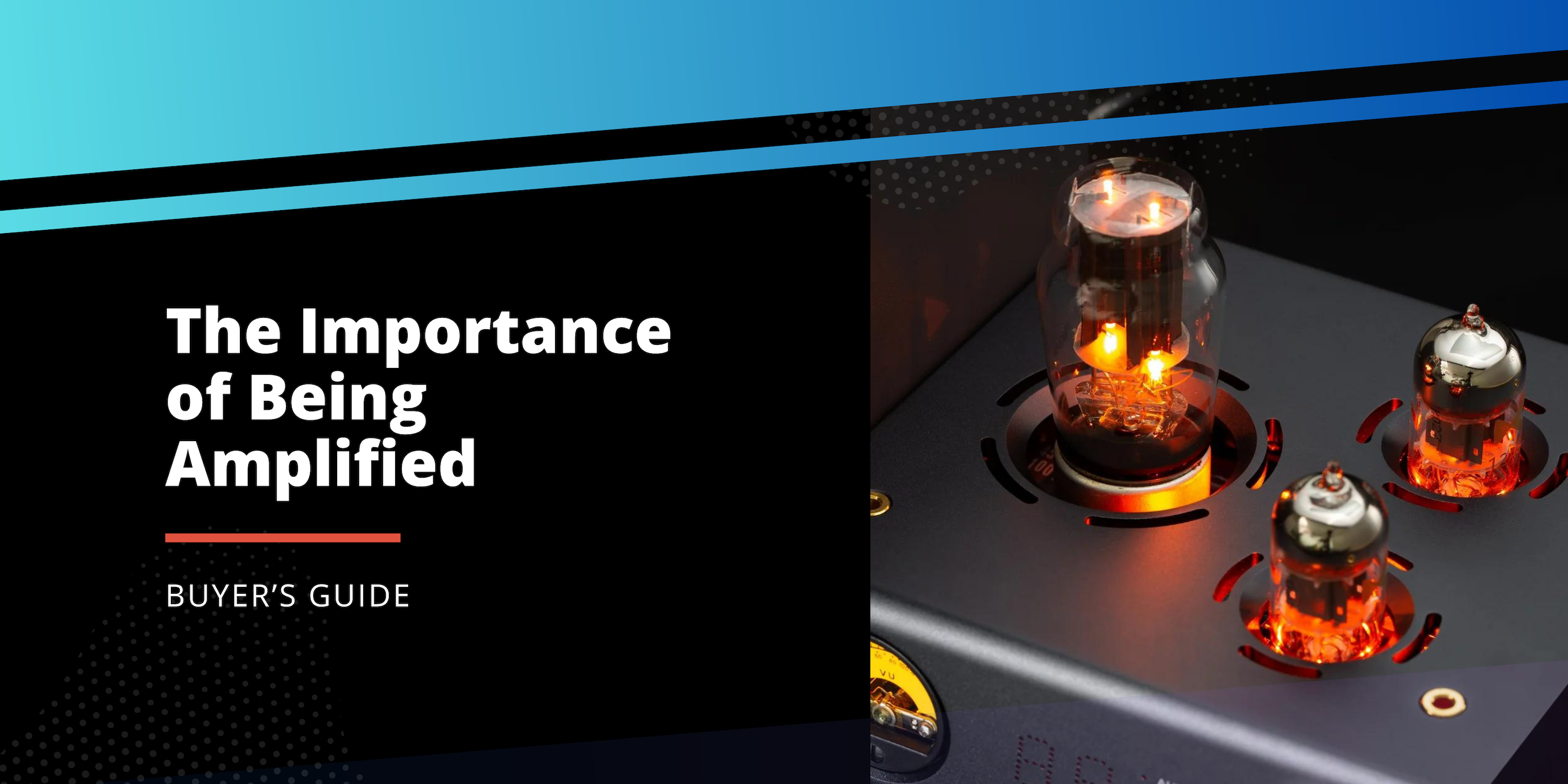
The Importance of Being Amplified: Why You Need a Headphone Amplifier
The Art of Audio: How Amplifiers Shape Sound Quality
The need for some audio components is obvious. Both beginners and seasoned audiophiles understand the pivotal role headphones play, for instance. However, the significance of proper headphone amplification is often misrepresented or even misunderstood. This guide dives into the world of headphone amplifiers, shedding light on why they’re indispensable for anyone who’s serious about their sound.
What Does a Headphone Amplifier Do?
At its core, a headphone amplifier does exactly what its name suggests—it amplifies the audio signal sent to your headphones. But why is this necessary? Most audio sources, whether it's your smartphone or a dedicated music player, can drive headphones to a reasonable volume. However, volume alone doesn't equate to quality.
The Science Behind the Sound
Headphone amplifiers serve two primary functions: to increase the power sent to the headphones and to improve or affect the quality of the audio signal. This enhancement is crucial for high-impedance headphones, which require more power to deliver their full potential in terms of clarity, detail, and dynamic range. Without adequate amplification, these headphones can sound lifeless and lackluster.
Impact on Audio Quality: Coloration
Beyond merely amplifying sound, amplifiers play a crucial role in shaping the audio's character. This effect is particularly pronounced with tube amplifiers, renowned for their ability to "color" the sound in a way that many audiophiles and music enthusiasts find irresistible.
The Unique Sound Signature of Tube Amplifiers
Tube amplifiers, known for their warm, rich, and somewhat analog sound quality, introduce a subtle harmonic distortion that can enhance the listening experience. This distortion is often described as adding "warmth" and "depth" to the music, making the sound feel more alive and emotional. Unlike solid-state amplifiers, which aim for clean amplification with minimal coloration, tube amps add a distinct timbre that can make the music sound more lush and smooth.
Moreover, tube amplifiers handle dynamics differently. They can soften the edges of loud transients, which, while technically a form of distortion, tends to make the sound more pleasant to human ears. This characteristic is especially beneficial for genres that thrive on a wide dynamic range, such as classical or jazz, where the nuance of each note plays a critical role in the overall experience.
How to Avoid Coloration with Linear Amplifiers
The concept of linearity is pivotal for audiophiles aiming to achieve the highest fidelity in sound reproduction. Linearity refers to an amplifier's ability to accurately amplify an audio signal without altering its fundamental characteristics.
The Principle of Linearity
An amplifier is considered linear when it amplifies all frequencies of the input signal equally, without introducing distortion or coloration. This means the output signal is a true, scaled replica of the input across the entire audible spectrum. In a perfectly linear amplifier, the relationship between the input and output signals is consistent, regardless of the signal's amplitude or frequency.
Measuring and Achieving Linearity
Achieving linearity is a complex engineering challenge, influenced by the design and components of the amplifier, including the circuit topology, the quality of components used, and the power supply stability. Manufacturers often use Total Harmonic Distortion (THD) as a metric to quantify how close to linear an amplifier is, with lower THD values indicating higher linearity.
Linearity Across the Volume Range
One aspect of linearity often discussed is an amplifier's ability to maintain its sound quality across its entire volume range. A linear amplifier should provide the same quality of sound at low volumes as at high volumes. This is crucial for ensuring that all details in the music are preserved, even at lower listening levels, allowing for a dynamic and expressive listening experience.
How Important is Linearity?
For audiophiles, the search for linearity is often about finding the right balance between technical perfection and personal preference. While a perfectly linear amplifier might aim for utmost fidelity of the original recording, the subtle colorations introduced by non-linearities in certain amplifiers are sometimes sought after for the musicality they add. The choice of amplifier often comes down to a personal decision based on the type of listening experience you prefer.
Do You Really Need an Amplifier?
While the built-in amplification in many devices has improved, dedicated headphone amplifiers still offer significant advantages, especially for high-quality headphones. They are not just for audiophiles but for anyone who values high-quality sound.
Conclusion
Understanding the importance of proper headphone amplification is a crucial step in your audiophile journey. By choosing the right amplifier, you not only enhance your listening experience but also ensure your headphones perform at their best.


